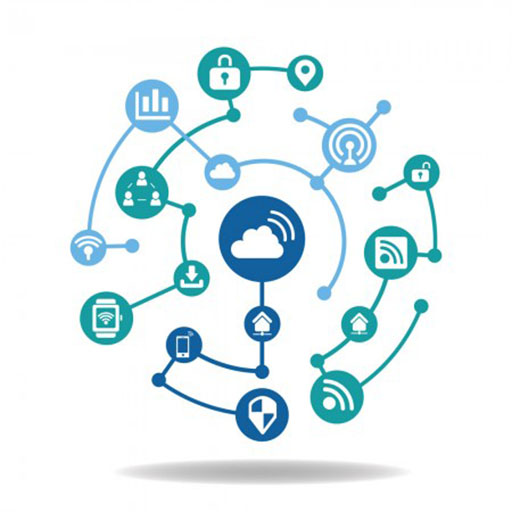IOT connected with e-learning

In the networking field, Internet of Things (IoT) can be referred to technological e-learning advancements. It is seen that through the internet, nowadays it becomes easier to be connected with the real world affairs by being acknowledges about the all-around happenings. Even everyone is aware about communicating with each other all over world. ‘Things’ can be specified as the objects which are connected through internet.Over the internet, the specific kind of interconnection of different things can serve its capability through the information which can be utilized in receiving and sending of evaluated data. It is said to be specialized in almost every field that can be determined in numerous manner for implementing wide range of applications format. Wide ranges can be mentioned aseducation, business, transportation, agriculture, healthcare and management. In a generalized manner, in this article specifically and mainly the discussion is being held over the Internet of Things (IoT). Specific emphasis on E-learning is said to be implemented as a source of information applied for its readers. By the utilization of smart learning as the IOT the smart techniques can also be represented shown by e-learning methods.
Abbasy, M.B. and Quesada, E.V., 2017. Predictable influence of IoT (Internet of Things) in the higher education. International Journal of Information and Education Technology, 7(12), pp.914-920.
AjazMoharkan, Z., Choudhury, T., Gupta, S.C. and Raj, G., 2017, February. Internet of Things and its applications in E-learning. In 2017 3rd International Conference on Computational Intelligence & Communication Technology (CICT) (pp. 1-5). IEEE.
Bayani, M., Leiton, K. and Loaiza, M., 2017. Internet of things (IoT) advantages on e-learning in the smart cities. International Journal of Development Research, 7(12), pp.17747-17753.
Bhatt, J. and Bhatt, A., 2017. IoT techniques to nurture education industry: scope & opportunities. International Journal On Emerging Technologies. Uttarakhand, India, pp.128-132.
Brun, O., Yin, Y., Gelenbe, E., Kadioglu, Y.M., Augusto-Gonzalez, J. and Ramos, M., 2018, February. Deep learning with dense random neural networks for detecting attacks against iot-connected home environments. In International ISCIS Security Workshop (pp. 79-89). Springer, Cham.
Kalashnikov, A., Zhang, H., Jennings, J. and Abramriuk, M.M., 2017. Remote laboratory: using Internet-of-Things (IoT) for E-learning.
Mathews, S.P. and Gondkar, D.R., 2017. Solution Integration Approach using IoT in Education System. International Journal of Computer Trends and Technology (IJCTT), 45(1).
Matsuo, K., Yamada, M., Bylykbashi, K., Cuka, M., Liu, Y. and Barolli, L., 2018, May. Implementation of an IoT-Based E-Learning Testbed: Performance Evaluation Using Mean-Shift Clustering Approach Considering Four Types of BrainWaves. In 2018 32nd International Conference on Advanced Information Networking and Applications Workshops (WAINA) (pp. 203-209). IEEE.
Njeru, A.M., Omar, M.S. and Yi, S., 2017, May. IoTs for capturing and mastering massive data online learning courses. In 2017 IEEE/ACIS 16th International Conference on Computer and Information Science (ICIS) (pp. 91-94). IEEE.
Oda, T., Matsuo, K., Barolli, L., Yamada, M. and Liu, Y., 2017. Design and implementation of an IoT-based e-learning testbed. International Journal of Web and Grid Services, 13(2), pp.228-241.
Pervez, S., ur Rehman, S. and Alandjani, G., 2018. Role of internet of things (iot) in higher education. In Proceedings of ADVED 2018-4th International Conference on Advances in Education and Social Sciences (pp. 792-800).
Prasanna, S., 2018. Combining internet of things and e-learning standards to provide pervasive learning experience. International Journal of Advanced Research in Computer Science, 9(Special Issue 1), p.128.
In submitting the manuscript to the International Journal on Integrated Education (IJIE), the authors certify that:
- They are authorized by their co-authors to enter into these arrangements.
- The work described has not been formally published before, except in the form of an abstract or as part of a published lecture, review, thesis, or overlay journal.
- That it is not under consideration for publication elsewhere,
- The publication has been approved by the author(s) and by responsible authorities – tacitly or explicitly – of the institutes where the work has been carried out.
- They secure the right to reproduce any material that has already been published or copyrighted elsewhere.
- They agree to the following license and copyright agreement.
License and Copyright Agreement
Authors who publish with International Journal on Integrated Education (IJIE) agree to the following terms:
Authors retain copyright and grant the International Journal on Integrated Education (IJIE) right of first publication with the work simultaneously licensed under Creative Commons Attribution License (CC BY 4.0) that allows others to share the work with an acknowledgment of the work's authorship and initial publication in this journal.









